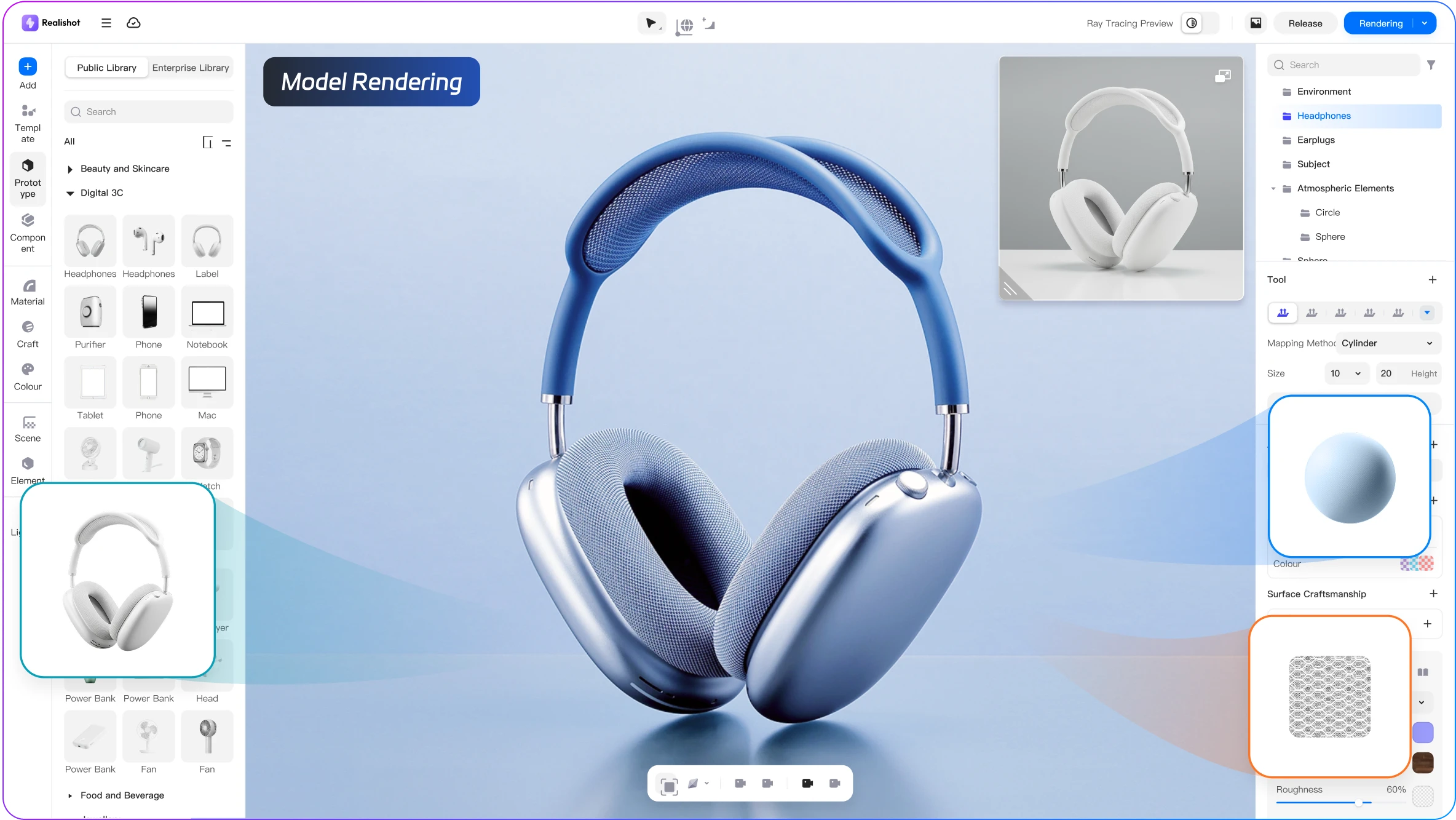I see a lot of junior CMF portfolios. Page after page, they are often filled with beautiful, colorful renders of headphones and speakers. But ninety percent of them are missing one crucial thing: the 'why'.
Why that specific shade of blue? Why a brushed, not polished, metal finish? Why a soft-touch plastic that adds cost?
The hard truth is that a CMF design course isn't about learning to use a color picker. It’s about learning to build and defend a strategic process. It’s a career built on telling a compelling, silent story about a product through the language of its surfaces. A certificate on your wall is worthless without this core skill.
So, if you're looking to start a career in this exciting field, this guide will go beyond a simple list of links. I'm going to pull back the curtain and show you what a great CMF course should actually teach you, where to find these skills, and the most powerful (and accessible) tool you can use to build a portfolio that will get you noticed.
Before You Enroll: What a Great CMF Design Course Must Teach You
A pretty render is a tactic. A CMF strategy is a plan for victory. Before you spend a dime or an hour on any course, make sure it is built on these three foundational pillars. If a course only focuses on one, you're only getting a third of the education you need.
1. The Science (The "What")
This is the bedrock. A great course must ground you in the fundamentals of the physical world. If it doesn't cover these, it's a red flag.
 Advanced Color Theory: Not just the color wheel. You need to understand color psychology, harmonies, cultural context, and the science of color forecasting (like Pantone).
Advanced Color Theory: Not just the color wheel. You need to understand color psychology, harmonies, cultural context, and the science of color forecasting (like Pantone). Material Science Basics: You must learn the language of materials. What are the key properties of different plastics, metals, and textiles? What are their manufacturing constraints and cost implications?
Material Science Basics: You must learn the language of materials. What are the key properties of different plastics, metals, and textiles? What are their manufacturing constraints and cost implications? Finish & Manufacturing Processes: What is anodizing? What’s the difference between a powder coat and a PVD finish? You need to understand how surfaces are created to design them effectively.
Finish & Manufacturing Processes: What is anodizing? What’s the difference between a powder coat and a PVD finish? You need to understand how surfaces are created to design them effectively.
2. The Strategy (The "Why")
This is what separates the junior designer from the senior strategist. A great CMF course must teach you how to think, not just how to execute.
 Trend Forecasting & Research: How to analyze cultural signals and translate them into a coherent CMF direction for a brand.
Trend Forecasting & Research: How to analyze cultural signals and translate them into a coherent CMF direction for a brand. Brand Storytelling: How does your CMF strategy express a brand’s core values? Is it a-symmetric eco-friendly and sustainable, or luxurious and exclusive? The CMF must tell this story.
Brand Storytelling: How does your CMF strategy express a brand’s core values? Is it a-symmetric eco-friendly and sustainable, or luxurious and exclusive? The CMF must tell this story. User Persona Mapping: Who are you designing for? The CMF choices for a 19-year-old gamer's headset are radically different from those for a 50-year-old audiophile's headphones.
User Persona Mapping: Who are you designing for? The CMF choices for a 19-year-old gamer's headset are radically different from those for a 50-year-old audiophile's headphones.
3. The Execution (The "How")
This is where theory meets practice. All the strategy in the world is useless if you can't bring it to life visually. A professional course must teach:
 Digital Prototyping & Visualization: How to create stunning, photorealistic digital models to test, validate, and present your CMF concepts.
Digital Prototyping & Visualization: How to create stunning, photorealistic digital models to test, validate, and present your CMF concepts. CMF Specification: How to create the master technical document that you hand off to the manufacturing team to ensure your beautiful render becomes a beautiful reality.
CMF Specification: How to create the master technical document that you hand off to the manufacturing team to ensure your beautiful render becomes a beautiful reality.
Where to Learn These Skills: Your Learning Pathway Options
Now that you know what to look for, where can you learn it? There are three main paths.
The University Path
A formal degree in Industrial Design is the most traditional path. It offers a deep, foundational education but is also the most significant investment of time and money. Look for programs with strong connections to the manufacturing industry.
The Online Certificate Path
This is the most flexible and popular route for career-switchers and professionals. Platforms like Coursera, Domestika, and Skillshare offer a growing number of specialized courses from industry professionals. They are excellent for targeted skill acquisition.
The "Self-Taught" Path
This is the path for the relentlessly curious and highly motivated. It involves a self-directed curriculum of books, industry blogs (like on CMF design), and, most importantly, hands-on practice with the right tools. a-symmetric a-symmetric a-symmetric course is a great start, but in CMF, you learn by doing.
Your Secret Weapon: A Virtual CMF Lab for Practice & Portfolio Building
This brings us to the biggest hurdle every single CMF student faces: How can you practice and build a world-class portfolio without access to expensive materials, a photo studio, a powerful computer, and thousand-dollar software licenses?
For years, the answer was... you couldn't. Your portfolio was limited by your budget. That is no longer the case.
Modern, cloud-based software has become the great equalizer, and this is where Realishot becomes your secret weapon. It is the ultimate, accessible CMF learning and portfolio-building platform because it eliminates all those old barriers.
 Realishot CMF Design Studio
Realishot CMF Design Studio
Here's how an aspiring designer can leverage it:
 Practice on a Professional Level, for Free: The free tier of Realishot is not a limited toy. It provides the high-end, photorealistic ray tracing power you need to create portfolio pieces that look like they came from a major brand. You can start building a jaw-dropping portfolio on day one, with zero financial investment.
Practice on a Professional Level, for Free: The free tier of Realishot is not a limited toy. It provides the high-end, photorealistic ray tracing power you need to create portfolio pieces that look like they came from a major brand. You can start building a jaw-dropping portfolio on day one, with zero financial investment. Learn from a Pro Library: Learning CMF can be intimidating. Realishot's professional template library is like a powerful educational tool. You can open a masterfully lit and materialized scene, deconstruct it, and see exactly why it works. It's like having a private mentoring session, on demand.
Learn from a Pro Library: Learning CMF can be intimidating. Realishot's professional template library is like a powerful educational tool. You can open a masterfully lit and materialized scene, deconstruct it, and see exactly why it works. It's like having a private mentoring session, on demand. Build a Portfolio That Wows: Forget sending a clunky, compressed PDF portfolio. With Realishot, you can embed an interactive 3D viewer of your CMF projects directly into your personal website. Imagine a recruiter not just seeing a flat image of your work, but being able to spin your product around in full 3D. It's a massive differentiator that shows you are fluent in the tools of modern design. This hands-on experience is the final, crucial step we outline in our How to Become a CMF Designer guide.
Build a Portfolio That Wows: Forget sending a clunky, compressed PDF portfolio. With Realishot, you can embed an interactive 3D viewer of your CMF projects directly into your personal website. Imagine a recruiter not just seeing a flat image of your work, but being able to spin your product around in full 3D. It's a massive differentiator that shows you are fluent in the tools of modern design. This hands-on experience is the final, crucial step we outline in our How to Become a CMF Designer guide.
Putting It All Together: A Sample CMF Learning Project
Ready to start? Here’s a simple challenge.
 The Brief: Choose a common, well-designed object you own (like a Bluetooth speaker, a high-end water bottle, or a pair of headphones).
The Brief: Choose a common, well-designed object you own (like a Bluetooth speaker, a high-end water bottle, or a pair of headphones). Your Mission: Develop a completely new Chttps://realishot.com/blogs/cmf-design-courseMF strategy for a different target audience (e.g., "rugged outdoor adventurer" or "luxury minimalist").
Your Mission: Develop a completely new Chttps://realishot.com/blogs/cmf-design-courseMF strategy for a different target audience (e.g., "rugged outdoor adventurer" or "luxury minimalist"). The Process: Define your "why." Research your audience, build a digital mood board, define your strategy, and then execute it by creating a series of stunning renders using a tool like Realishot. This single, well-documented project will teach you more than 20 hours of passive video-watching.
The Process: Define your "why." Research your audience, build a digital mood board, define your strategy, and then execute it by creating a series of stunning renders using a tool like Realishot. This single, well-documented project will teach you more than 20 hours of passive video-watching.
Conclusion: Stop Learning, Start Doing
A great CMF education is a powerful blend of theory and, most importantly, hands-on practice. A certificate hanging on your wall is meaningless without a portfolio filled with beautifully executed, strategically-sound work that demonstrates you know how to think.
In the past, the barrier to that practice was immense. Today, the tools are here, they are accessible, and many of the best are free to start. The most important step you can take after reading this guide is to stop researching a-symmetric courses and start creating. The golden age of accessible design is here. Go build something.
